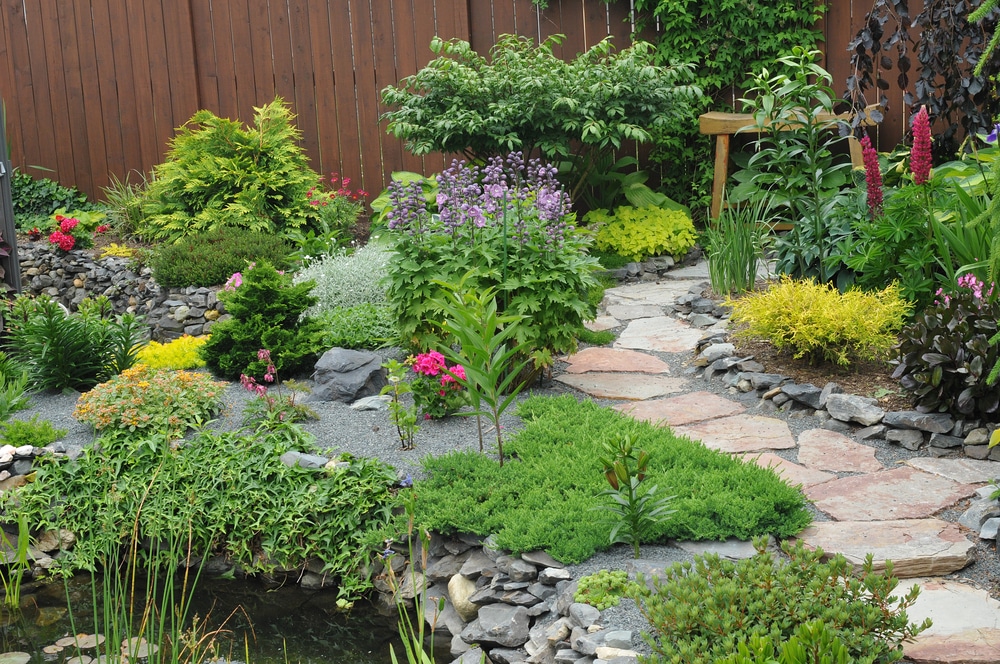Winter is firmly in place around the great state of Utah, and those who maintain a landscape of any kind on their property will naturally be interested in its upkeep throughout the colder parts of the year. There are a few elements of a given landscape that should be considered here, and various rocks, boulders and other hardscape elements you utilize are great examples.
At BioGrass Sod Farms, we’re happy to offer a comprehensive selection of landscaping products for clients around Salt Lake City, from sod, seed and mulch to various landscape hardgoods and more. While specifics will vary here depending on exactly which hardgoods you utilize, here are some general tips on winter care for various rocks, boulders and other hardgoods in your landscape.
Managing and Remedying Cracks
When it comes to various rocks or boulders in your landscape, one of the primary concerns during winter is cracking. Water can easily seep into small cracks or crevices within these materials, then freeze and expand as temperatures drop. If this occurs repeatedly over the course of a winter, it can lead to larger cracks that may be harmful for both aesthetics and functionality.
Luckily, there are a few simple steps you can take to minimize the risk of this taking place. First and foremost, make sure all rocks or boulders are as clean and dry as possible before winter hits – this will reduce the amount of water that may be absorbed by surface areas and seep into cracks. For smaller cracks that have already formed, some light sealing products may also be useful for filling them in and preventing any further damage.
Preventing Pitting
Another common issue with various rocks or boulders during winter is pitting, which refers to small holes or dents that form on the surface. In most cases, this will occur due to a combination of water freezing and expanding plus other external elements like salt or de-icing products that are commonly used on driveways or sidewalks.
To avoid pitting, consider covering any rocks or boulders in your landscape with a protective tarp before using salt or other de-icing products. Additionally, if you notice any pitting forming early on in the winter season, try to fill these areas with some form of caulk and sealant – this will help prevent further degradation.
Consider Snow
Because we know winter often means plenty of snow around the state, it’s important to be aware how this element can impact various landscape hardgoods. For instance, if you have rocks or boulders that are close to sidewalks or other areas where shoveling will take place, be sure to clear off these areas first before potentially hitting any landscape items with your shovel.
This will help not only prevent damage to the rocks or boulders, but also keep them clean and free of debris that may build up over time. In addition, consider shoveling snow away from these hardgoods rather than plowing directly over them – this will avoid any potential impact damage.
Stones and Drainage
Down related lines, if you have a stone or gravel drainage system in your landscape, be sure to check on it periodically throughout the winter season. Stones that are used for this purpose are often small and may get buried under snow or ice, potentially causing blockages in the drainage system. If necessary, clear any debris away from these stones and ensure proper water flow is taking place.
Safe De-Icing Products
Most properties will have a need for de-icing products during harsh winters, and considering how these interact with various landscape hardgoods is important. In particular, you should be careful with rock salt or other similar products, as they can cause various forms of damage to rocks and boulders.
As an alternative, consider using sand or even kitty litter for de-icing purposes – these will not cause any harm to your landscape elements. If you do use salt or a similar product, be sure to thoroughly clean and rinse off any rocks or boulders that may have been exposed as soon as possible.
Monitoring
Finally, we recommend monitoring your landscape hardgoods frequently during the winter months. If you notice any signs of damage or degradation, take quick action to mitigate the issue before it worsens. Additionally, if you typically use these elements in various landscaping designs or arrangements, consider taking photos before and after winter to track any changes that may occur. This will help you plan for future winters and make any necessary adjustments to protect your landscape investment.
At BioGrass Sod Farms, we’re always happy to help with any landscaping needs you may have, including winter care for your various rocks, boulders and other hardscape elements. Contact us today to learn more about our products or services for clients around SLC!
